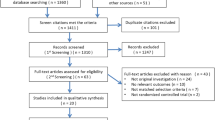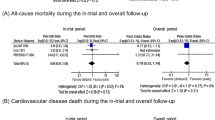Abstract
Recently, clinical trial data showed that rapid attainment of goal blood pressure (BP) reduces the risk for cardiovascular disease (CVD) events. It is unknown whether patient characteristics linked to the magnitude of CVD risk influence the speed of BP control. Time to attain goal systolic BP (SBP) in Kaplan-Meier survival curves was contrasted for strata of baseline characteristics and intensity of hypertension treatment. Survival analyses showed that albuminuria, diabetes, increased body mass index, millimeters of mercury above Joint National Committee (JNC) SBP goal, higher Framingham risk score, older age, depressed estimated glomerular filtration rate, and greater intensity of antihypertensive drug treatment all predicted slower JNC SBP goal attainment (P < 0.015); the intensity of antihypertensive drug therapy when goal BP was attained was also greater in all conditions linked to slow goal attainment. Cox proportional hazards model that included the above patient characteristics revealed all characteristics slowed attainment of JNC SBP goals (P < 0.03). Thus, patient characteristics influence speed of BP control and practitioners should avoid therapeutic inertia.
Similar content being viewed by others

References and Recommended Reading
Fields LE, Burt VL, Cutler JA, et al.: The burden of adult hypertension in the United States 1999 to 2000: a rising tide. Hypertension 2004, 44:398–404.
Knight EL, Bohn RL, Wang PS, et al.: Predictors of uncontrolled hypertension in ambulatory patients. Hypertension 2001, 38:809–814.
Munrow PJ: Detection and control of hypertension in the population: the United States experience. Am J Hypertens 1998, 11:744–746.
Yusuf S, Sleight P, Pogue J, et al.: Effects of an angiotensin-converting-enzyme inhibitor, ramipril, on cardiovascular events in high-risk patients. The Heart Outcomes Prevention Evaluation Study Investigators. N Engl J Med 2000, 342:145–153.
Cushman WC, Ford CE, Cutler JA, et al.: Success and predictors of blood pressure control in diverse North American settings: the antihypertensive and lipid-lowering treatment to prevent heart attack trial (ALLHAT). J Clin Hypertens (Greenwich) 2002, 4:393–404.
Julius S, Kjeldsen SE, Weber M, et al.: Outcomes in hypertensive patients at high cardiovascular risk treated with regimens based on valsartan or amlodipine: the VALUE randomised trial. Lancet 2004, 363:2022–2031.
Staessen JA, Thijisq L, Fagard R, et al.: Effects of immediate versus delayed antihypertensive therapy on outcome in the Systolic Hypertension in Europe Trial. J Hypertens 2004, 22:847–857.
Sutton Tyrrell K, Wildman R, Newman A, Kuller LH: Extent of cardiovascular risk reduction associated with treatment of isolated systolic hypertension. Arch Intern Med 2003, 163:2728–2731.
Basile JN, Chrysant S: The importance of early antihypertensive efficacy: the role of angiotensin II receptor blocker therapy. J Hum Hypertens 2006, 20:169–175.
Papademetriou V, Farsang C, Elmfeldt D, et al.: Stroke prevention with the angiotensin II type 1-receptor blocker candesartan in elderly patients with isolated systolic hypertension: the Study on Cognition and Prognosis in the Elderly (SCOPE). J Am Coll Cardiol 2004, 44:1175–1180.
Dahlof B, Sever PS, Poulter NR, et al.: Prevention of cardiovascular events with an antihypertensive regimen of amlodipine adding perindopril as required versus atenolol adding bendroflumethiazide as required, in the Anglo-Scandinavian Cardiac Outcomes Trial-Blood Pressure Lowering Arm (ASCOT-BPLA): a multicentre randomized controlled trial. Lancet 2005, 366:895–906.
Budtz-Jorgensen E, Keiding N, Grandjean P, Weihe P: Confounder selection in environmental epidemiology: assessment of health effects of prenatal mercury exposure. Ann Epidemiol 2007, 17:27–35.
Okonofua EC, Simpson KN, Jesri A, et al.: Therapeutic inertia is an impediment to achieving the Healthy People 2010 blood pressure control goals. Hypertension 2006, 47:345–351.
Andrade SE, Gurwitz JH, Field TS, et al.: Hypertension management: the care gap between clinical guidelines and clinical practice. Am J Manag Care 2004, 10(7 Pt 2):481–486.
O’Connor PJ: Overcome clinical inertia to control systolic blood pressure. Arch Intern Med 2003, 163:2677–2678.
Flack JM, Gardin JM, Yunis C, Liu K: Static and pulsatile blood pressure correlates of left ventricular structure and function in black and white young adults: the CARDIA study. Am Heart J 1999, 138(5 Pt 1):856–864.
Staessen JA, Li Y, Thijs L, Wang JG: Blood pressure reduction and cardiovascular prevention: an update including the 2003–2004 secondary prevention trials. Hypertens Res 2005, 28:385–407.
Flack JM, Neaton J, Grimm R Jr, et al.: Blood pressure and mortality among men with prior myocardial infarction. Multiple Risk Factor Intervention Trial Research Group. Circulation 1995, 92:2437–2745.
The sixth report of the Joint National Committee on prevention, detection, evaluation, and treatment of high blood pressure [no authors listed]. Arch Intern Med 1997, 157:2413–2446.
Chobanian AV, Bakris GL, Black HR, et al.: The Seventh Report of the Joint National Committee on Prevention, Detection, Evaluation, and Treatment of High Blood Pressure: the JNC 7 report. JAMA 2003, 289:2560–2572.
Talbert RL: New therapeutic options in the National Cholesterol Education Program Adult Treatment Panel III. Am J Manag Care 2002, 8(12 Suppl):S301–S307.
Carlini R, Obialo CI, Rothstein M: Intravenous erythropoietin (rHuEPO) administration increases plasma endothelin and blood pressure in hemodialysis patients. Am J Hypertens 1993, 6:103–107.
Douglas JG, Bakris GL, Epstein M, et al.: Management of high blood pressure in African Americans: consensus statement of the Hypertension in African Americans Working Group of the International Society on Hypertension in Blacks. Arch Intern Med 2003, 163:525–541.
Flack JM, Yunis C, Preisser J, et al.: The rapidity of drug dose escalation influences blood pressure response and adverse effects burden in patients with hypertension: the Quinapril Titration Interval Management Evaluation (ATIME) Study. ATIME Research Group. Arch Intern Med 2000, 160:1842–1847.
Berlowitz DR, Ash AS, Hickey EC, et al.: Inadequate management of blood pressure in a hypertensive population. N Engl J Med 1998, 339:1957–1963.
Hicks LS, Fairchild DG, Horng MS, et al.: Determinants of JNC VI guideline adherence, intensity of drug therapy, and blood pressure control by race and ethnicity. Hypertension 2004, 44:429–434.
Weber MA, Julius S, Kjeldsen SE, et al.: Blood pressure dependent and independent effects of antihypertensive treatment on clinical events in the VALUE trial. Lancet 2004, 363:2049–2051.
Author information
Authors and Affiliations
Corresponding author
Rights and permissions
About this article
Cite this article
Nasser, S.A., Lai, Z., O’Connor, S. et al. Does earlier attainment of blood pressure goal translate into fewer cardiovascular events?. Current Science Inc 10, 398–404 (2008). https://doi.org/10.1007/s11906-008-0074-2
Published:
Issue Date:
DOI: https://doi.org/10.1007/s11906-008-0074-2



